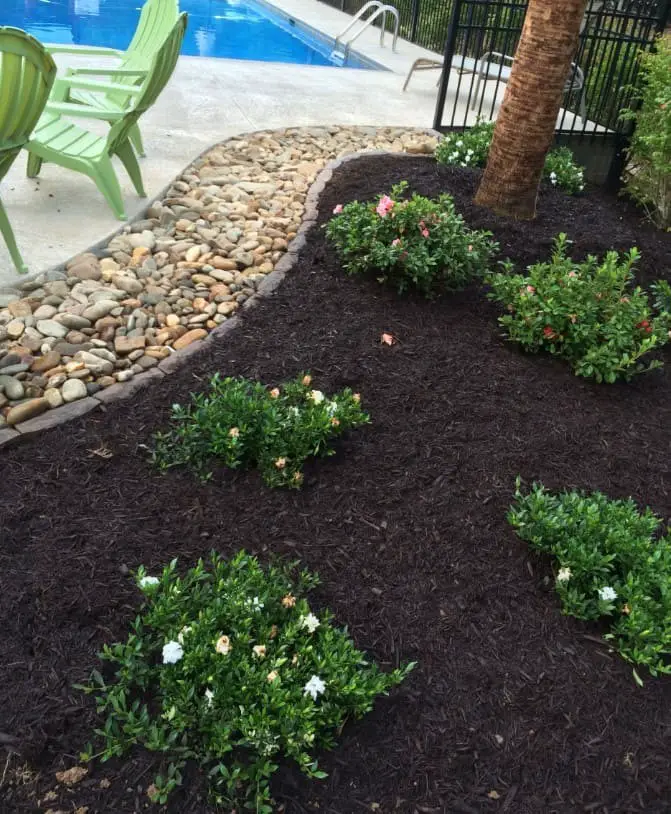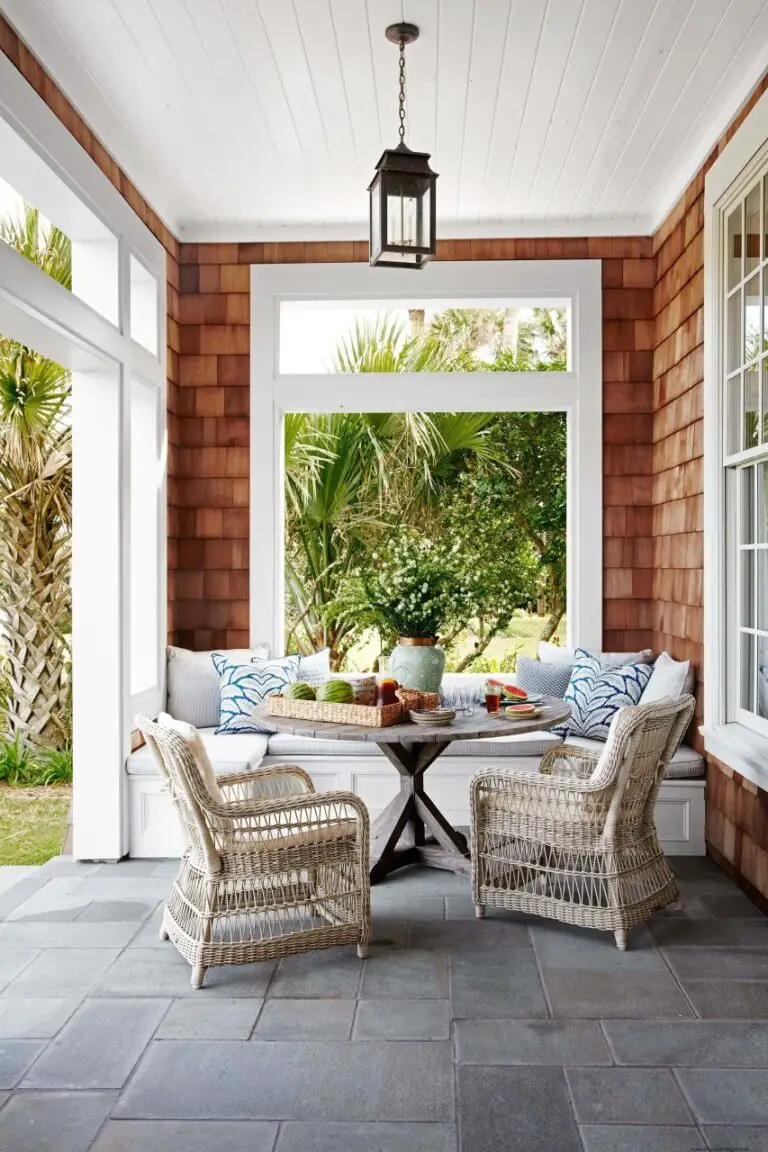10+ Cute Shared Boys Bedroom Ideas And Designs
Designing a shared bedroom for your boys requires striking a balance between their individual needs and personalities. It’s not just about finding space where they can sleep, but also creating an environment that respects their unique preferences while fostering bonding opportunities. Every child craves a personal sanctuary, yet sharing a room demands thoughtful planning and creative solutions to ensure both boys feel valued and at ease.
This daunting task can be simplified by considering the significance of space and privacy, as well as incorporating theme-based design ideas. Popular themes for boys include aviation-inspired decor, bold color combinations, and neutral tones. By thoughtfully selecting furniture, arranging storage solutions, and introducing personalized touches, you can create a harmonious shared bedroom that honors each boy’s individuality.
In this article, we’ll explore practical tips on creating personal zones, incorporating theme-based design ideas, and choosing suitable color schemes to energize the room while promoting calmness.
Understanding Space and Privacy Needs
When boys share a room, it’s essential to strike a balance between communal living and individual needs. Each child has their own way of being, and respecting their desire for personal space and privacy is crucial for fostering a harmonious coexistence. To achieve this, we’ll explore practical strategies for creating distinct areas within the shared bedroom that cater to each boy’s unique personality, needs, and preferences.
Significance of Space and Privacy
In shared bedrooms, recognizing each child’s need for their own personal space is vital for fostering a sense of ownership and respect among siblings. By designating a private area within the room, boys in particular are less likely to experience conflicts with their brothers or sisters, as they feel a stronger connection to the space and to each other. This approach not only acknowledges individuality but also teaches valuable lessons about sharing and cooperation.
Ideas for Creating Personal Zones
To create personal zones within a shared bedroom, you can employ various strategies that cater to each child’s unique needs and preferences. By implementing these tactics, you can strike a balance between the shared space and individual areas, ultimately fostering a sense of ownership and pride among your children.
One effective approach is to utilize dividers, such as bookshelves, curtains, or screens, to physically separate the room into distinct zones.
This clear boundary not only provides each child with a sense of privacy but also helps to define their personal space.
Another strategy is to incorporate color coding by assigning different colors for each child’s bedding, furniture, or wall space. This simple yet effective approach helps in distinguishing personal areas and adds a fun element to the room decor.
To further personalize each zone, you can allow each child to choose posters, art, or themes that reflect their personality and interests. This not only makes them feel valued but also gives them a sense of ownership over their space.
By combining these strategies, you can create a harmonious living environment that addresses both the shared and individual needs of your children.
Ultimately, this approach enables each child to feel they have a place of their own within the shared bedroom, promoting a sense of unity and cooperation.
Theme and Design Ideas
Transforming a shared boys’ bedroom into an immersive space requires careful consideration of the perfect theme. Options like adventure, sports, superheroes, and space exploration not only resonate with kids but also fuel their imagination and cater to diverse interests. This section delves into the art of selecting themes that harmonize with both children’s personalities, providing a unique framework for incorporating these elements into the bedroom decor.
Popular Themes for Boys
Boys’ bedroom themes often revolve around their favorite passions and interests. For some, it’s the thrill of adventure that sparks their imagination. Themes inspired by jungles, mountains, or the sea bring the excitement of exploration and discovery right into their room, making them feel like they’re on a thrilling quest.
Others might be more inclined towards sports, with themes based on their favorite teams or athletes connecting them to their passion and inspiring them to get active and stay fit. For young superheroes-in-the-making, themed bedrooms featuring characters from comics or movies are the perfect way to encourage bravery and represent good battling evil.
And then there are the curious minds who love space exploration, with themes that include stars, planets, and galaxies fueling their curiosity about the universe and the wonders of science.
Incorporating Themes into Decor
To create a cohesive and engaging theme for your children’s shared space, it’s essential to strike a balance between their individual tastes and preferences. Here’s how you can achieve this:Start by fostering an open discussion about each child’s interests and preferences. If their passions differ, look for common ground or consider combining themes in a harmonious way. When selecting furniture and decorations, choose versatile pieces that align with the theme while also being practical.
For instance, a bed designed to resemble a spaceship for a space-themed room or a bookshelf shaped like a mountain for an adventure-themed space. To add visual interest without making permanent changes, utilize wall art, posters, and themed bedding. These elements are easy to update as your children grow and their tastes evolve. Create interactive spaces that foster engagement and exploration. If possible, dedicate a corner of the room to theme-related play or reading activities.
This could be a tent for an adventure-themed room, a mini basketball hoop for a sports-themed space, or a telescope for a space-themed area. Finally, give each child the opportunity to incorporate personal touches into their side of the room. This might include their favorite superhero posters or their preferred sports team’s colors. By doing so, you ensure that both children feel represented in the room’s design and develop a sense of ownership.
Orange Airplane Shared Boys Bedroom
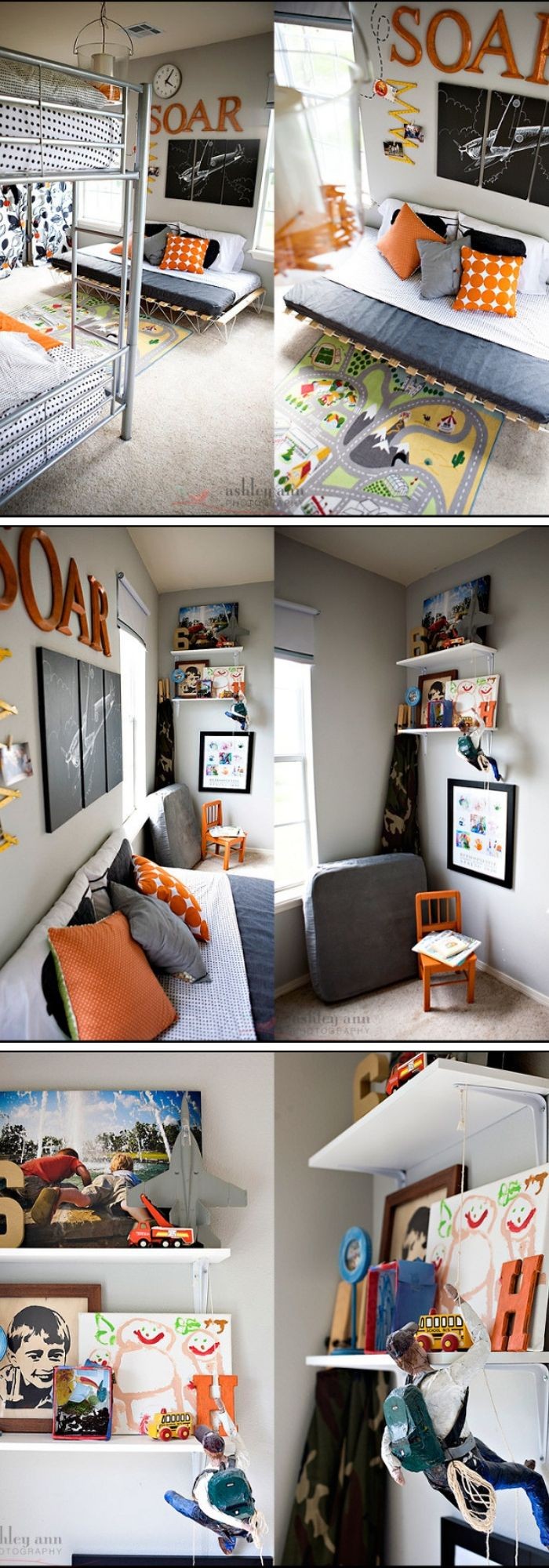
Boys bedroom reveal
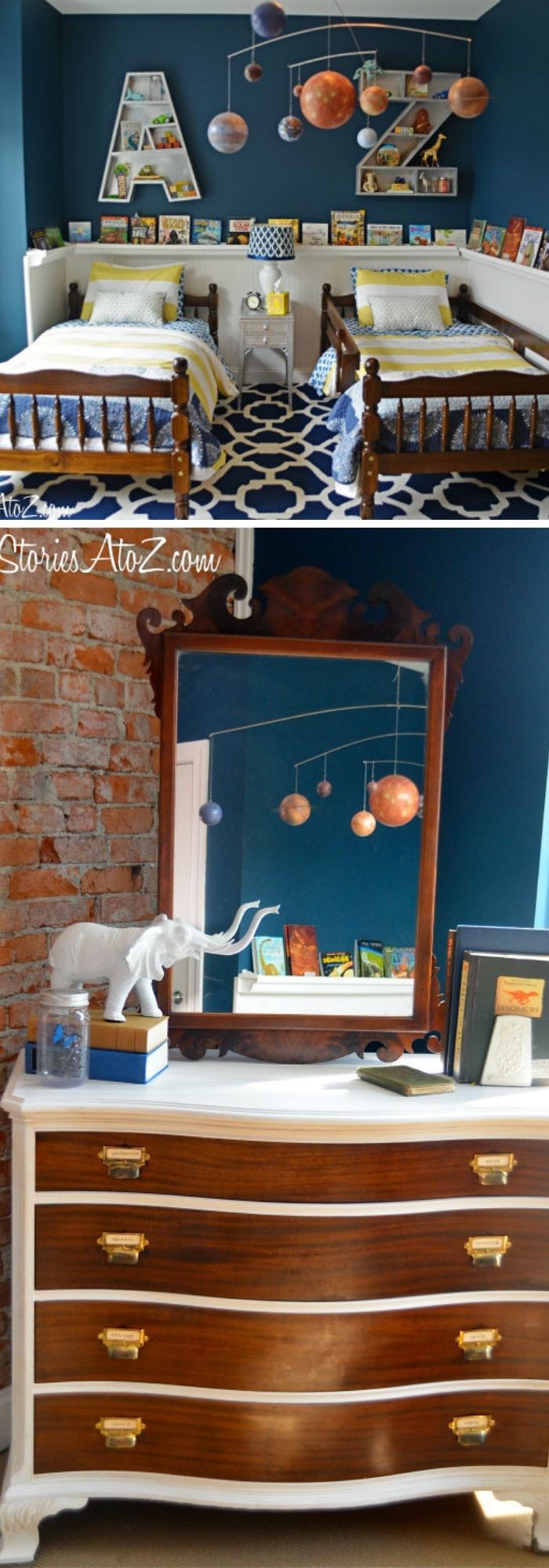
Boys room transformation
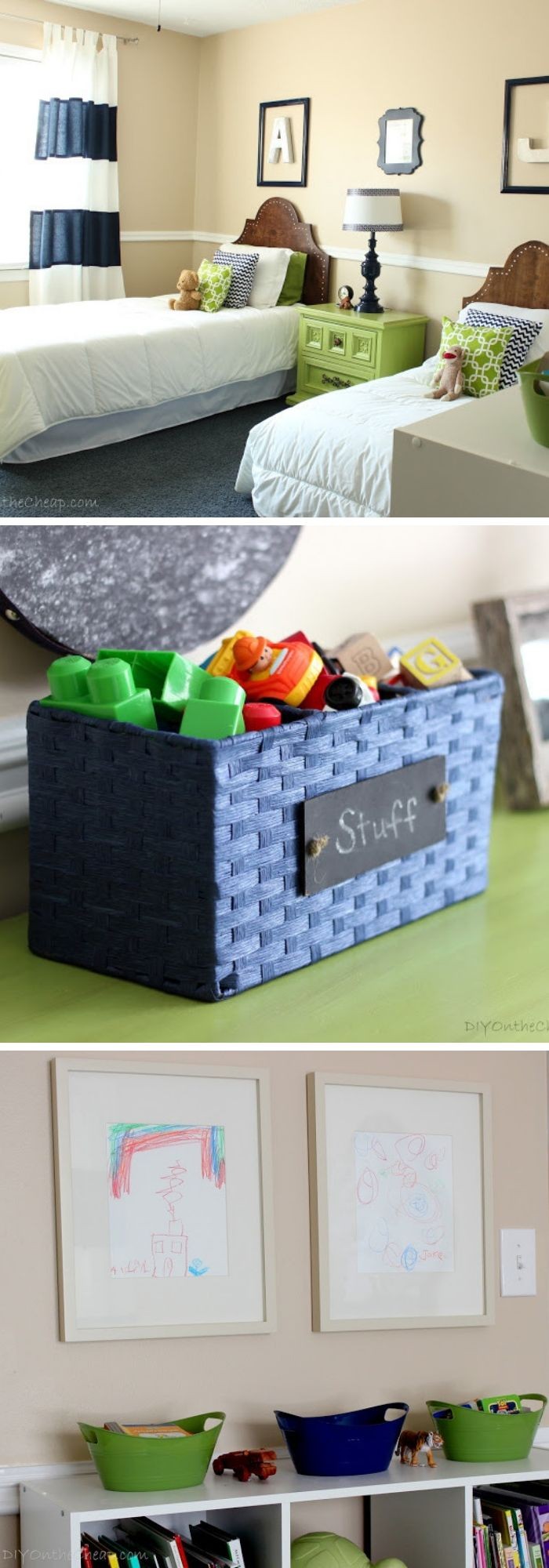
Orange and Blue Shared Boys Bedroom
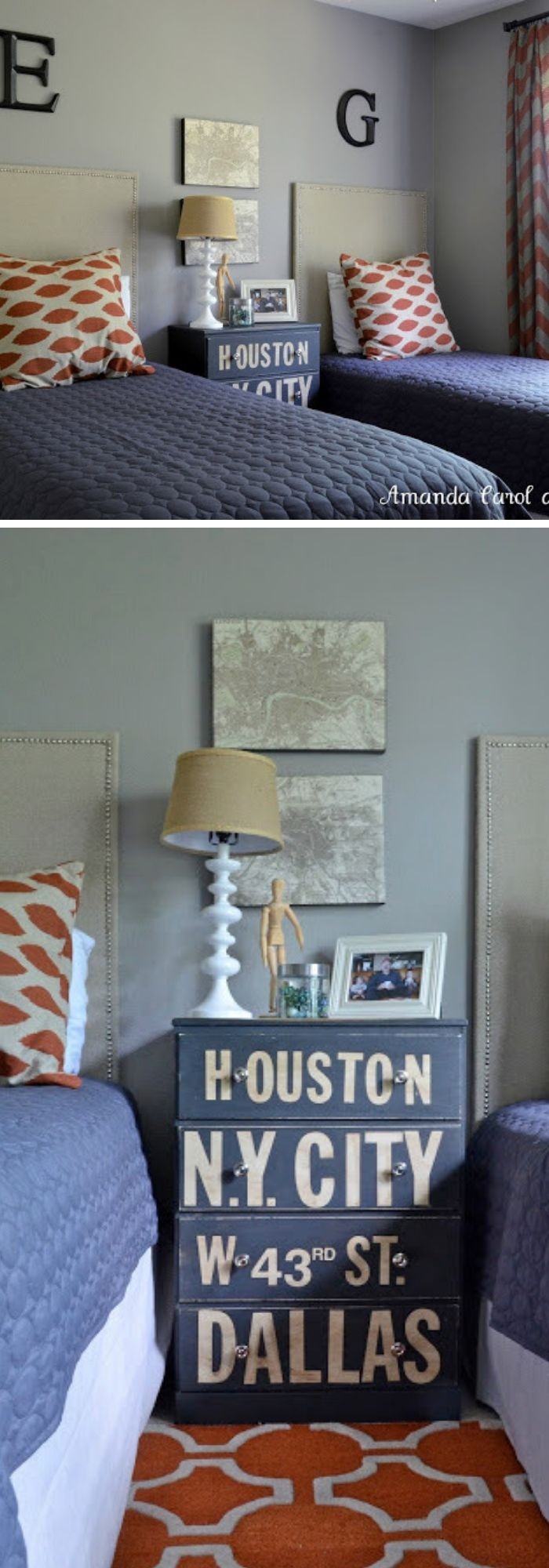
Neutral Shared Boys Bedroom
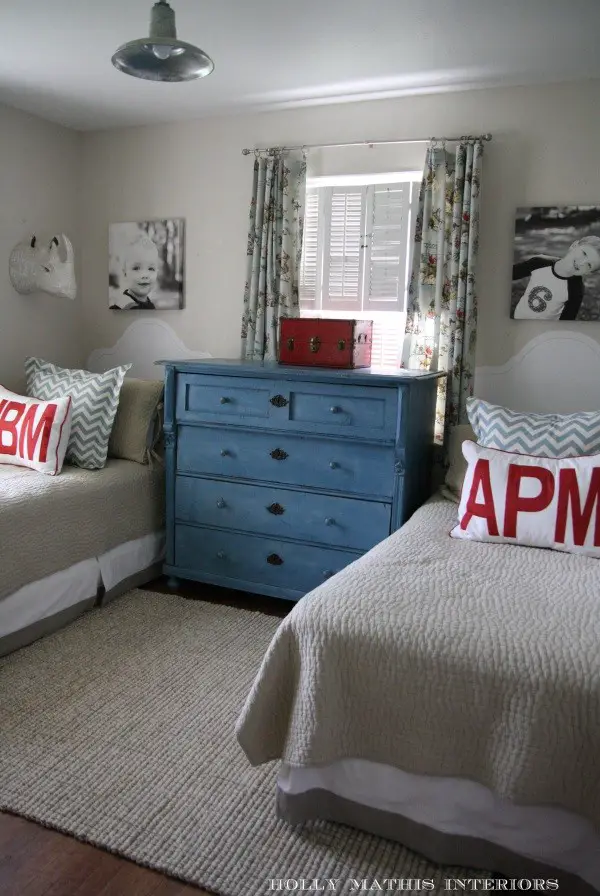
Restoration Hardware Inspired Boys Shared Bedroom
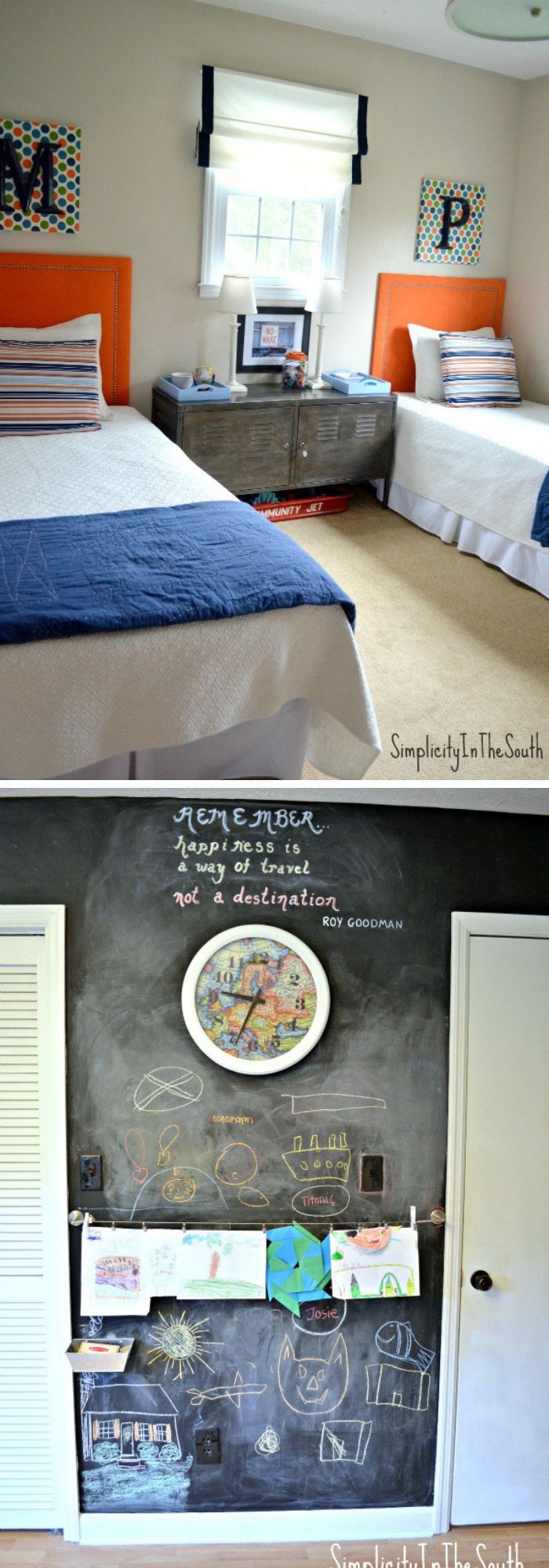
Red and Blue Shared Boys Bedroom
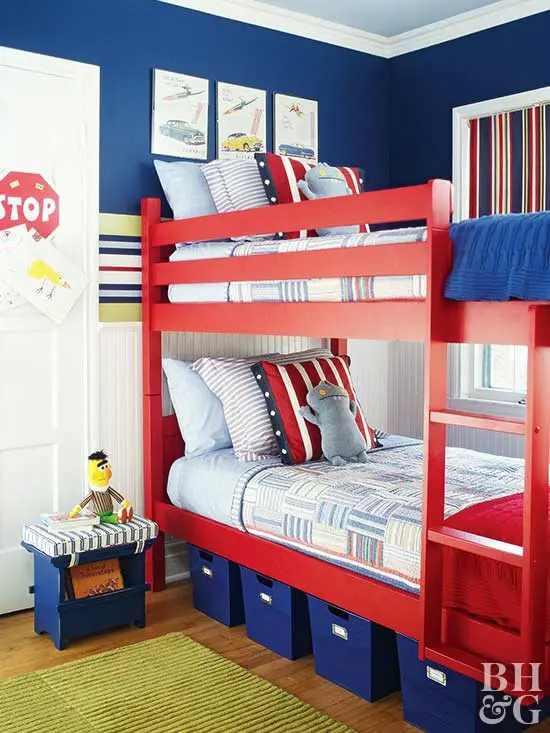
Color Schemes
Selecting the perfect color scheme for a shared boys’ bedroom is crucial in setting the tone and ambiance of the space. Colors have the power to either invigorate or soothe, depending on the palette chosen. In this section, we’ll guide you through the process of selecting colors that not only visually appeal but also serve a functional purpose in creating a harmonious environment for the boys.
Suitable Color Schemes
When it comes to creating a color scheme that resonates with your audience, there’s no one-size-fits-all approach. Different colors evoke different emotions and atmospheres, making it crucial to consider the mood you want to convey. For instance, bright and bold colors like reds and yellows can energize play areas or study corners, perfect for stimulating creativity and activity.
On the other hand, blues and greens have a calming effect, ideal for sleeping and relaxation zones where serenity is key. For a more mature audience, monochrome schemes can create a sophisticated ambiance, fitting for older children or teenagers who appreciate subtlety. Finally, earthy tones bring warmth and invitation to any part of the room, making them suitable for a wide range of spaces and purposes.
Using Colors in Shared Bedrooms
Incorporating energizing colors into the room can be achieved by incorporating bold hues such as red, orange, and yellow. These vibrant shades are perfect for areas designated for play or study, as they stimulate creativity and focus. To avoid overwhelming the space, balance these bright colors with neutral tones to create a harmonious atmosphere. For a calming ambiance, consider blues and greens that promote relaxation and serenity.
These soothing hues are ideal for sleeping areas, helping to define a peaceful zone within the room. This can be achieved through wall paint, bedding, or accessories. Defining individual spaces within a shared bedroom can also be accomplished by using color. Paint walls in different shades of the same color or incorporate accessories in each child’s preferred colors to mark their areas. This approach fosters a sense of ownership and personalization while maintaining cohesion.
To unify the room’s design, select a neutral base color as the foundation for your color scheme. This allows for flexibility when adding personal touches through accessories or bedding without clashing. A unified color scheme promotes harmony and belonging, making the shared space feel like a collective home.
Furniture Selection and Arrangement
When it comes to furnishing a shared boys’ bedroom, selecting the right pieces is vital for maximizing space efficiency while accommodating various activities. This section provides guidance on choosing furniture that not only conserves space but also evolves with your kids as they grow. Additionally, it emphasizes the significance of durability and age-appropriateness in creating a functional and enjoyable environment that meets their changing needs.
Guidance on Furniture Selection
As you embark on furnishing a room for your growing sons, prioritize versatility over individual purpose. Opt for pieces that seamlessly blend functionality with adaptability, allowing you to effortlessly reconfigure the space as their needs evolve. This approach not only maximizes available square footage but also fosters an environment that evolves alongside their interests and developmental stages.
Innovative Bed Designs
Maximizing Space and Functionality: Alternative Bed Options When it comes to choosing beds for your home, there are many options available that can help you make the most of your space. Instead of traditional single or bunk beds, consider alternative options that not only provide a comfortable place to sleep but also offer additional storage and functionality. Loft Beds, for instance, raise the bed to create a spacious area underneath that can be used as a study or play area.
This is perfect for small rooms where space is at a premium. Twin Beds with Storage take it one step further by incorporating built-in drawers or shelves into the bed design. This provides extra storage without taking up valuable floor space, making them ideal for small bedrooms or homes. Bunk Beds are another great option for maximizing space. By stacking beds, you can create a cozy and comfortable sleeping area while freeing up more floor space to play, learn, or relax.
Importance of Durable and Age-Appropriate Furniture
When it comes to furnishing a shared bedroom for boys, there are several key considerations to keep in mind. Firstly, the furniture must be durable enough to withstand the rigours of daily use, with easy-to-clean surfaces and robust designs that can handle energetic activities. Look for materials that are low-maintenance and designed with safety and functionality in mind.
Additionally, it’s essential to choose age-appropriate furniture that suits their size and needs at different stages of growth. Adjustable furniture options can be particularly useful, as they allow you to adapt the room to their changing requirements over time. Incorporating versatile designs like bunk beds or loft beds with built-in storage can also enhance the functionality of the space, providing ample room for play, study, and relaxation.
By prioritizing durability and selecting age-appropriate pieces, you can create a safe, inviting, and adaptable environment that your boys will enjoy for years to come.
Storage Solutions
To maintain a sense of harmony in a shared boys’ bedroom, clever storage strategies are crucial to maximize available space. As outlined below, this section delves into innovative ideas for keeping the room tidy and organized, emphasizing creative solutions that serve multiple purposes while enhancing the room’s practicality.
Ideas for Shared Storage Solutions
When it comes to maintaining a tidy and organized room for boys, having effective storage solutions in place is crucial. By utilizing every available space, you can create an environment that fosters learning, playtime, and relaxation without being overwhelmed by clutter. Here are some practical ideas to get you started: Under-bed Storage: This involves using drawers or boxes that fit snugly under the bed, perfect for stashing toys, clothes, or bedding.
By utilizing this often-wasted space, you can keep the floor clear and make the most of your room’s vertical real estate. Wall-Mounted Shelves: Installing shelves fixed to the wall at varying heights is another great way to keep the floor clutter-free while also making use of vertical space for books, trophies, or decorative items. This storage solution is especially useful in rooms with limited floor space.
Dual-Purpose Furniture: Finally, consider incorporating furniture that serves multiple purposes, such as a desk with built-in storage or a bench with hidden compartments. Not only does this approach maximize the use of available space, but it also reduces the need for separate storage units, keeping your room looking tidy and organized.
Highlighting Creative Storage Options
When it comes to maximizing space efficiency in a bedroom, clever storage solutions can make all the difference. One innovative approach is to utilize the often-overlooked area beneath the bed through under-bed storage systems, which allow for easy access to essential items while keeping clutter at bay. This solution is particularly useful for storing seasonal clothing, extra bedding, or toys.
Another space-saving strategy is to install wall-mounted shelves that serve both functional and decorative purposes. By placing these shelves at various heights, you can accommodate a range of items, from books and games to pictures and collectibles, keeping the room organized while showcasing personal treasures. The added bonus is that this design saves floor space, creating a sense of openness and airiness.
For shared bedrooms where space is at a premium, dual-purpose furniture offers a practical solution. Examples include benches with storage compartments or desks with built-in shelving and drawers. These innovative designs not only provide ample storage but also eliminate the need for additional floor space, ensuring a clutter-free and harmonious sleeping environment.
Personalized Spaces
When designing a shared bedroom for multiple children, it’s crucial to create distinct spaces that reflect each child’s personality. This can be achieved by incorporating personalized elements throughout the room. For instance, monograms, customized wall art, and individualized bedding are all effective ways to infuse personal touches into their shared space.
By doing so, each child will feel valued and recognized within their own unique area, fostering a sense of ownership and pride in their bedroom.
Personalization Ideas
By incorporating personal touches into a child’s space, you can foster a sense of ownership and individuality. Here are some strategies to achieve this: One approach is to add monograms to items such as pillows or wall art. This not only gives the child a clear sense of possession but also adds a touch of sophistication. Another effective method is to create personalized wall art that reflects each child’s unique interests, style, or personality.
This allows for self-expression and injects visual interest into their space. Finally, individualized bedding can be a great way to make each child’s sleeping area feel truly personal and cozy. By incorporating their favorite colors, patterns, or themes, you can create a sense of comfort and familiarity that they’ll love.
Incorporating Hobbies and Interests
Crafting a shared bedroom that honors the distinct personalities and passions of two boys requires thoughtful consideration of their individual hobbies and interests. Rather than imposing a uniform theme, parents can curate a space that celebrates each child’s unique identity by incorporating personalized items and decor that reflect their interests and passions.
For instance, one child might have a fascination with astronomy, which could be reflected in star-shaped pillows or a model planet mobile, while the other child is enthralled by dinosaurs, prompting the inclusion of dinosaur-printed bedding or a prehistoric creature figurine collection.
By doing so, parents can create an atmosphere where both children feel valued and empowered to express themselves, fostering a sense of individuality and self-expression that will enhance their comfort and happiness in their shared space.
Lighting
In a shared boys’ bedroom, good lighting is more than just an aesthetic consideration – it’s a crucial aspect that has a profound impact on the room’s functionality. Not only does it set the tone for the space, but it also enables various activities like studying, playing, and sleeping to unfold smoothly.
By providing optimal lighting, you can significantly boost your boys’ mood, increase their productivity, and promote their overall well-being by minimizing eye strain and creating a cozy atmosphere that fosters relaxation.
Lighting Options
When it comes to different activities, the right type of lighting can make all the difference. To create an optimal environment for each task, consider the following guidelines: For studying and focused tasks, bright and focused lights like desk lamps or adjustable LED lights are ideal. These types of lights provide a concentrated beam that illuminates the area without causing glare.
On the other hand, playing activities require ambient lighting, which provides a softer, overall light that fills the room. Ceiling fixtures or wall sconces can create this type of ambiance. Finally, for sleeping purposes, accent lighting is best, offering a soft glow and creating a calming atmosphere conducive to sleep. Dimmable lights or nightlights are perfect for achieving this subtle brightness.
Importance of Good Lighting
In a shared bedroom, good lighting plays a vital role in creating an environment that is conducive to both individual and shared activities. A well-designed lighting system can cater to different needs and moods, ensuring that the space remains versatile and functional. For instance, task lighting can be used for focused study or reading sessions, allowing each sibling to work independently without disturbing the other.
On the other hand, ambient lighting can create a warm and welcoming atmosphere, perfect for family bonding activities like playing games or having movie nights. Additionally, accent lighting can be used to create a cozy ambiance that helps signal bedtime, making it easier for children to wind down and prepare for sleep.
Space-Saving Tips
Optimizing the layout of a small bedroom for kids demands innovative problem-solving and strategic execution. As we delve into this realm, our goal is to distill essential space-saving strategies that harmoniously merge functionality, organization, and fun, thereby transforming this intimate space into a haven where your little ones can thrive.
Multi-Functional Furniture
In small shared bedrooms, multi-functional furniture is a lifesaver. By serving multiple purposes, these pieces of furniture conserve space and inject flexibility into the room’s layout. Take loft beds, for instance. These innovative designs elevate the bed, freeing up valuable floor space that can be repurposed as a desk or play area underneath.
Murphy beds also offer a clever solution, folding up against the wall when not in use to create an open floor space ideal for activities during the day. Meanwhile, storage ottomans provide a cozy spot to sit while also concealing toys, books, or clothes from view.
Strategic Layout Planning
By optimizing the arrangement of furniture and decor in a small shared bedroom, it’s possible to create a functional space that meets the needs of its occupants. To achieve this, consider implementing the following strategies:
Use vertical space to store items such as books, toys, and personal belongings without consuming valuable floor area. This can be done by installing tall shelves or wall-mounted storage units.
Define separate areas within the room for sleeping, studying, and playing.
This can be achieved through the use of area rugs, distinct lighting fixtures, or strategic furniture placement.
Opt for sliding doors instead of traditional swinging doors to save space in closets or at the bedroom entrance.
By implementing these space-saving tips and incorporating multi-functional furniture that serves multiple purposes, such as sleeping, studying, and storage, it’s possible to create a comfortable and organized shared bedroom.
Furthermore, careful planning can ensure that every square inch of the room is used effectively. By thinking creatively and making smart choices, you can transform a cramped bedroom into a space that feels spacious, well-organized, and perfectly suited to your needs.
Conclusion
Designing a shared bedroom for two boys requires a thoughtful approach that balances their unique personalities, space needs, and privacy requirements. By incorporating themes and colors that reflect their individuality, selecting furniture that is both functional and age-appropriate, and implementing creative storage solutions to maintain organization, you can create a harmonious and comfortable space where both children feel valued and supported.
Furthermore, strategic lighting and layout planning are essential for enhancing the room’s functionality and promoting a sense of cooperation and harmony between the siblings. Ultimately, the key is to strike a balance between individuality and unity, creating a space that fosters a strong bond between your boys while also allowing them to grow and thrive as individuals.


